Comcast 2013 Annual Report Download - page 17
Download and view the complete annual report
Please find page 17 of the 2013 Comcast annual report below. You can navigate through the pages in the report by either clicking on the pages listed below, or by using the keyword search tool below to find specific information within the annual report.-
 1
1 -
 2
2 -
 3
3 -
 4
4 -
 5
5 -
 6
6 -
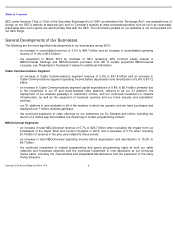 7
7 -
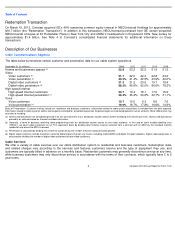 8
8 -
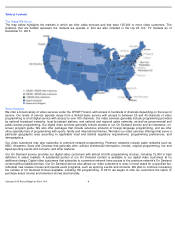 9
9 -
 10
10 -
 11
11 -
 12
12 -
 13
13 -
 14
14 -
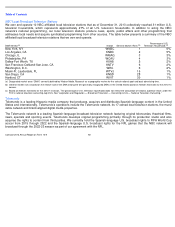 15
15 -
 16
16 -
 17
17 -
 18
18 -
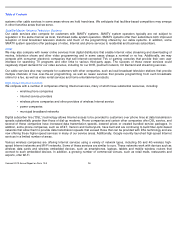 19
19 -
 20
20 -
 21
21 -
 22
22 -
 23
23 -
 24
24 -
 25
25 -
 26
26 -
 27
27 -
 28
28 -
 29
29 -
 30
30 -
 31
31 -
 32
32 -
 33
33 -
 34
34 -
 35
35 -
 36
36 -
 37
37 -
 38
38 -
 39
39 -
 40
40 -
 41
41 -
 42
42 -
 43
43 -
 44
44 -
 45
45 -
 46
46 -
 47
47 -
 48
48 -
 49
49 -
 50
50 -
 51
51 -
 52
52 -
 53
53 -
 54
54 -
 55
55 -
 56
56 -
 57
57 -
 58
58 -
 59
59 -
 60
60 -
 61
61 -
 62
62 -
 63
63 -
 64
64 -
 65
65 -
 66
66 -
 67
67 -
 68
68 -
 69
69 -
 70
70 -
 71
71 -
 72
72 -
 73
73 -
 74
74 -
 75
75 -
 76
76 -
 77
77 -
 78
78 -
 79
79 -
 80
80 -
 81
81 -
 82
82 -
 83
83 -
 84
84 -
 85
85 -
 86
86 -
 87
87 -
 88
88 -
 89
89 -
 90
90 -
 91
91 -
 92
92 -
 93
93 -
 94
94 -
 95
95 -
 96
96 -
 97
97 -
 98
98 -
 99
99 -
 100
100 -
 101
101 -
 102
102 -
 103
103 -
 104
104 -
 105
105 -
 106
106 -
 107
107 -
 108
108 -
 109
109 -
 110
110 -
 111
111 -
 112
112 -
 113
113 -
 114
114 -
 115
115 -
 116
116 -
 117
117 -
 118
118 -
 119
119 -
 120
120 -
 121
121 -
 122
122 -
 123
123 -
 124
124 -
 125
125 -
 126
126 -
 127
127 -
 128
128 -
 129
129 -
 130
130 -
 131
131 -
 132
132 -
 133
133 -
 134
134 -
 135
135 -
 136
136 -
 137
137 -
 138
138 -
 139
139 -
 140
140 -
 141
141 -
 142
142 -
 143
143 -
 144
144 -
 145
145 -
 146
146 -
 147
147 -
 148
148 -
 149
149 -
 150
150 -
 151
151 -
 152
152 -
 153
153 -
 154
154 -
 155
155 -
 156
156 -
 157
157 -
 158
158 -
 159
159 -
 160
160 -
 161
161 -
 162
162 -
 163
163 -
 164
164 -
 165
165 -
 166
166 -
 167
167 -
 168
168 -
 169
169 -
 170
170 -
 171
171 -
 172
172 -
 173
173 -
 174
174 -
 175
175 -
 176
176 -
 177
177 -
 178
178 -
 179
179 -
 180
180 -
 181
181 -
 182
182 -
 183
183 -
 184
184 -
 185
185 -
 186
186 -
 187
187 -
 188
188 -
 189
189 -
 190
190 -
 191
191 -
 192
192 -
 193
193 -
 194
194 -
 195
195 -
 196
196 -
 197
197 -
 198
198 -
 199
199 -
 200
200 -
 201
201 -
 202
202 -
 203
203 -
 204
204 -
 205
205 -
 206
206 -
 207
207 -
 208
208 -
 209
209 -
 210
210 -
 211
211 -
 212
212 -
 213
213 -
 214
214 -
 215
215 -
 216
216 -
 217
217 -
 218
218 -
 219
219 -
 220
220 -
 221
221 -
 222
222 -
 223
223 -
 224
224 -
 225
225 -
 226
226 -
 227
227 -
 228
228 -
 229
229 -
 230
230 -
 231
231 -
 232
232 -
 233
233 -
 234
234 -
 235
235 -
 236
236 -
 237
237 -
 238
238 -
 239
239 -
 240
240 -
 241
241 -
 242
242 -
 243
243 -
 244
244 -
 245
245 -
 246
246 -
 247
247 -
 248
248 -
 249
249 -
 250
250 -
 251
251 -
 252
252 -
 253
253 -
 254
254 -
 255
255 -
 256
256 -
 257
257 -
 258
258 -
 259
259 -
 260
260 -
 261
261 -
 262
262 -
 263
263 -
 264
264 -
 265
265 -
 266
266 -
 267
267 -
 268
268 -
 269
269 -
 270
270 -
 271
271 -
 272
272 -
 273
273 -
 274
274 -
 275
275 -
 276
276 -
 277
277 -
 278
278 -
 279
279 -
 280
280 -
 281
281 -
 282
282 -
 283
283 -
 284
284 -
 285
285 -
 286
286 -
 287
287 -
 288
288 -
 289
289 -
 290
290 -
 291
291 -
 292
292 -
 293
293 -
 294
294 -
 295
295 -
 296
296 -
 297
297 -
 298
298 -
 299
299 -
 300
300 -
 301
301 -
 302
302 -
 303
303 -
 304
304 -
 305
305 -
 306
306 -
 307
307 -
 308
308 -
 309
309 -
 310
310 -
 311
311 -
 312
312 -
 313
313 -
 314
314 -
 315
315 -
 316
316 -
 317
317 -
 318
318 -
 319
319 -
 320
320 -
 321
321 -
 322
322 -
 323
323 -
 324
324 -
 325
325 -
 326
326 -
 327
327 -
 328
328 -
 329
329 -
 330
330 -
 331
331 -
 332
332 -
 333
333 -
 334
334 -
 335
335
 |
 |

Table of Contents
The majority of our produced and acquired films are initially distributed for exhibition in movie theaters. After their release in movie
theaters, we sell and license our films through various methods. We distribute our films globally by selling them in DVD format to
retail stores, rental kiosks and subscription by mail services and by selling electronic copies through digital distributors and video-
on-
demand services provided by multichannel video providers, including our Cable Communications segment. We also license our
films, including selections from our film library, to cable, broadcast and premium networks, to digital distributors, and to video-on-
demand and pay-per-
view services. The volume of our content that is made available through digital distributors is increasing as
consumers continue to seek alternative ways to view our content.
Our Filmed Entertainment segment generates revenue primarily from the worldwide distribution of our produced and acquired films
for exhibition in movie theaters, the sale of our owned and acquired films in home entertainment formats, such as DVDs, and the
licensing of our owned and acquired films. We also generate revenue from producing and licensing live stage plays and distributing
filmed entertainment produced by third parties as well as from various digital media properties.
Theme Parks
Our Theme Parks segment consists primarily of our Universal theme parks in Orlando and Hollywood. Universal Orlando includes
two theme parks, Universal Studios Florida and Universal’
s Islands of Adventure, as well as CityWalk, a dining, retail and
entertainment complex. Universal Orlando also features three on-
site themed hotels in which we own a noncontrolling interest. Our
Universal theme park in Hollywood consists primarily of Universal Studios Hollywood. In addition, we license the right to use the
Universal Studios brand name and other intellectual property, and also provide other services, to third parties that own and operate
the Universal Studios Japan theme park in Osaka, Japan and the Universal Studios Singapore theme park on Sentosa Island,
Singapore. We also own a water park, Wet ‘n Wild, located in Orlando.
Our Theme Parks segment licenses the right to use a substantial amount of intellectual property from third parties for its themed
elements in rides, attractions, retail outlets and merchandising.
Our Theme Parks segment generates revenue primarily from theme park attendance and per capita spending at our Universal
theme parks in Orlando and Hollywood. Per capita spending includes ticket price and in-
park spending on food, beverages and
merchandise. We also receive fees from the third parties that own and operate Universal Studios Japan and Universal Studios
Singapore for intellectual property licenses and other services.
Competition
All of our businesses operate in intensely competitive, consumer-
driven and rapidly changing environments and compete with a
growing number of companies that provide a broad range of communications products and services and entertainment, news and
information products and services to consumers. Technological changes are further intensifying and complicating the competitive
landscape for all of our businesses by challenging existing business models and affecting consumer behavior.
Cable Communications
Competition for the cable services we offer consists primarily of direct broadcast satellite (“DBS”)
providers, which have a national
footprint and compete in all our service areas, and phone companies, which overlap approximately 45% of our service areas and
are continuing to expand their fiber-
based networks. These competitors offer features, pricing and packaging for cable services that
are comparable to the pricing and services we offer. There also continue to be new companies, some with significant financial
resources, that potentially may compete on a larger scale with our cable services. For example, companies continue to emerge that
provide Internet streaming and downloading of video programming, some of which charge a
Comcast 2013 Annual Report on Form 10
-
K
12
